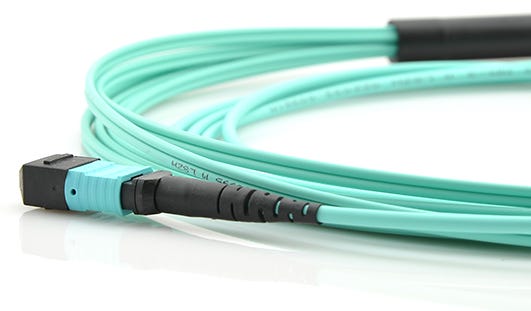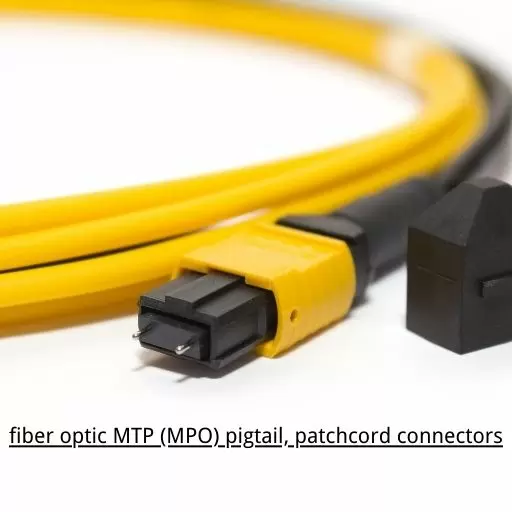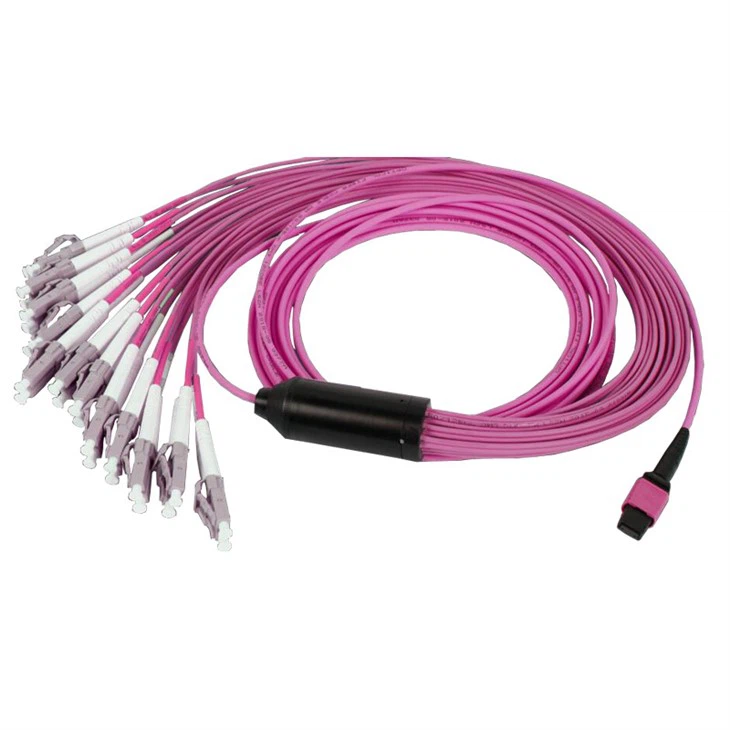MPO Cable Assemblies for Modern Data Centers

Efficient cabling forms the backbone of modern data centers, leveraging advanced fibertechnology and fiberoptics. The rapid growth in worldwide data volume demands robust and scalable solutions. MPO cable assemblies, including patchcable and fiberdropcable options, emerge as vital components in this landscape. These mpocables enable faster transmission rates and support high-density applications. Data centers benefit from the compact design of MPO cables, which reduces pathway congestion and improves airflow. The adoption of MPO technology ensures that data centers can meet the increasing demands for high-speed data transfer and network expansion.
Understanding MPO Cable Assemblies
What are MPO Cable Assemblies?
Definition and Basic Components
MPO (Multi-Fiber Push On) cable assemblies consist of multi-fiber cables terminated with MPO connectors. These connectors can house multiple fibers in a single ferrule, allowing for high-density connections. The basic components include the MPO connector, fiber optic cables, and alignment pins. MPO connectors utilize precision-molded MT ferrules, ensuring optimal fiber alignment and signal integrity.
Historical Development and Evolution
The development of MPO cable assemblies began in the 1990s to address the growing need for high-density and high-speed data transmission. Over the years, advancements in fibertechnology and fiberoptics have led to significant improvements. Modern MPO cables now support applications up to 400G, making them essential for contemporary data centers.
Key Features and Benefits
High-Density Connectivity
MPO cable assemblies offer high-density connectivity, which is crucial for modern data centers. A single MPO connector can accommodate up to 24 fibers, significantly reducing the number of cables required. This high-density feature helps minimize pathway congestion and improves airflow within the datacenter.
Scalability and Flexibility
MPO cables provide excellent scalability and flexibility. Data centers can easily upgrade from 10G to 40G or 100G without replacing the entire cabling infrastructure. This adaptability makes MPO cables a cost-effective solution for future-proofing data centers.
Reduced Installation Time
MPO cable assemblies offer a plug-and-play solution, drastically reducing installation time. Pre-terminated MPO cables eliminate the need for field termination and splicing, ensuring quick and efficient deployment. This feature is particularly beneficial in environments where downtime must be minimized.
Types of MPO Cable Assemblies
Single-mode vs. Multi-mode
MPO cable assemblies come in both single-mode and multi-mode configurations. Single-mode MPO cables are ideal for long-distance data transmission, offering low insertion loss and high bandwidth capabilities. Multi-mode MPO cables are suitable for short-distance applications, providing cost-effective solutions for high-speed data transfer within data centers.
Various Connector Types
MPO connectors are available in different types, including 8, 12, and 24 fiber configurations. Each type serves specific needs based on the application requirements. For instance, 12-fiber MPO connectors are commonly used in 40G and 100G applications, while 24-fiber connectors are suitable for higher-density environments.

Functionality in Modern Data Centers
Role in Data Transmission
High-Speed Data Transfer
MPO cable assemblies excel in high-speed data transfer. The compact design of MPO cables allows for efficient data transmission, reducing latency and enhancing overall network performance. Data centers benefit from the ability to support speeds up to 400G, ensuring that high-bandwidth applications run smoothly. The use of precision-molded MT ferrules in MPO connectors guarantees optimal fiber alignment, which is crucial for maintaining signal integrity during high-speed transfers.
Bandwidth Capabilities
MPO cables offer impressive bandwidth capabilities. These assemblies can handle large volumes of data, making them ideal for modern data centers. The high-density connectivity provided by MPO connectors supports multiple fibers in a single connection, maximizing bandwidth utilization. This feature is essential for applications requiring substantial data throughput, such as cloud computing and big data analytics. Data centers can rely on MPO technology to meet the ever-growing demands for increased bandwidth.
Integration with Existing Infrastructure
Compatibility with Legacy Systems
MPO cable assemblies integrate seamlessly with existing infrastructure. Data centers often have legacy systems that need upgrading without a complete overhaul. MPO cables provide a solution by being compatible with traditional fiber optics and connectors. This compatibility ensures that data centers can enhance their network capabilities without significant disruptions. The ability to connect MPO cables with legacy systems makes the transition to higher-speed networks smooth and cost-effective.
Future-Proofing Considerations
Future-proofing remains a critical consideration for data centers. MPO cable assemblies offer scalability and flexibility, allowing for easy upgrades as technology advances. Data centers can transition from 10G to 40G or even 100G without replacing the entire cabling system. This adaptability ensures that investments in MPO technology remain valuable over time. By choosing MPO cables, data centers position themselves to meet future demands and technological advancements.
Selection Criteria for MPO Cable Assemblies
Performance Specifications
Insertion Loss and Return Loss
Insertion loss measures the signal loss that occurs when light passes through an MPO connector. Lower insertion loss indicates better performance. MPO cable assemblies with low insertion loss ensure high-speed data transmission and minimal signal degradation. Return loss measures the amount of light reflected back toward the source. High return loss values indicate better performance by reducing reflections that can interfere with data transmission. Data centers must select MPO cables with optimal insertion loss and return loss to maintain network efficiency.
Durability and Reliability
Durability and reliability are crucial for MPO cable assemblies in modern data centers. High-quality MPO cables withstand physical stress and environmental factors. Reliable MPO connectors ensure consistent performance over time. Data centers should choose MPO cables made from robust materials to ensure long-term reliability. Regular testing and certification validate the performance and durability of MPO cables, ensuring they meet industry standards.
Environmental Considerations
Temperature and Humidity Tolerance
MPO cable assemblies must perform well under varying environmental conditions. Temperature and humidity tolerance are critical factors. MPO cables should operate efficiently in both high and low temperatures. Humidity resistance ensures that MPO cables function properly in moist environments. Data centers should select MPO cables with specifications that match their environmental conditions to avoid performance issues.
Compliance with Industry Standards
Compliance with industry standards guarantees the quality and performance of MPO cable assemblies. Standards such as TIA/EIA-568 and ISO/IEC 11801 provide guidelines for fiber optic cabling systems. MPO cables that comply with these standards ensure compatibility and reliability. Data centers should verify that their MPO cables meet these standards to ensure seamless integration and optimal performance.
Installation and Maintenance
Best Practices for Installation
Pre-Installation Testing
Pre-installation testing ensures that MPO cable assemblies perform optimally. Technicians should use specialized testing tools to verify the integrity of the cables. Optical Time Domain Reflectometers (OTDR) and power meters can detect any faults or inconsistencies. Testing each cable before installation prevents potential issues during operation. Enterprises can transition smoothly into 100G networks by ensuring all cables meet performance standards.
Proper Handling and Storage
Proper handling and storage of MPO cables maintain their performance and longevity. Technicians should handle cables with care to avoid physical damage. Avoid bending cables beyond their specified bend radius. Store cables in a clean, dry environment to prevent contamination and moisture damage. Using protective caps on connectors during storage can prevent dust and debris from affecting performance. Proper handling and storage practices ensure reliable network performance.

Maintenance and Troubleshooting
Regular Inspection and Cleaning
Regular inspection and cleaning of MPO cable assemblies are essential for maintaining optimal performance. Technicians should schedule routine inspections to check for signs of wear or damage. Use specialized cleaning tools to remove dust and contaminants from connectors. Clean connectors ensure proper signal transmission and reduce the risk of network disruptions. Regular maintenance extends the lifespan of MPO cables and maintains high-speed data transfer capabilities.
Common Issues and Solutions
Common issues with MPO cable assemblies include signal loss, misalignment, and connector damage. Signal loss can result from dirty or damaged connectors. Cleaning or replacing affected connectors can resolve this issue. Misalignment of fibers within the connectors can cause performance degradation. Technicians should use alignment tools to ensure proper fiber alignment. Connector damage often results from improper handling. Replacing damaged connectors restores network performance. Addressing these common issues promptly ensures reliable and efficient data center operations.
Advanced Topics
Innovations in MPO Technology
Latest Developments and Trends
MPO cable assemblies have seen significant advancements in recent years. The demand for high-speed data transmission has driven these developments. Modern MPO cables now support up to 400G applications. This capability meets the needs of contemporary data centers. The use of corning clearcurve fibers enhances performance. These fibers offer low insertion loss and high bandwidth capabilities. Ruggedized MPO fiber optic cable assemblies like the SENKO IP-SERIES have emerged. These connectors provide effective solutions for harsh environmental applications.
The market for MPO fiber optic connectors continues to grow. Increasing consumer awareness of health and wellness drives this growth. The need for efficient telecommunication networks also contributes. High-density solutions reduce network footprint. This reduction benefits both indoor and outdoor applications. The MTP®/MPO system solves cable congestion issues. Correct polarity maintenance ensures optimal network performance.
Future Prospects
The future of MPO technology looks promising. Data centers will continue to demand higher speeds and greater bandwidth. MPO cables will evolve to meet these requirements. Future developments may include even higher fiber counts. These advancements will further reduce pathway congestion. Improved airflow within data centers will result. The integration of artificial intelligence may enhance cable management. Predictive maintenance could become a standard feature. This innovation will ensure consistent performance and reliability.

Case Studies and Real-World Applications
Success Stories from Leading Data Centers
Many leading data centers have successfully implemented MPO cable assemblies. These success stories highlight the benefits of MPO technology. One notable example is a major cloud service provider. This provider upgraded to MPO cables to support 100G applications. The upgrade reduced installation time and improved network performance. Another example involves a financial institution. This institution faced challenges with network congestion. MPO cables provided a high-density solution. The result was enhanced data transfer speeds and reduced latency.
A telecommunications company also benefited from MPO technology. The company needed to upgrade its legacy systems. MPO cables offered compatibility with existing infrastructure. The transition to higher-speed networks was smooth and cost-effective. These success stories demonstrate the versatility and effectiveness of MPO cables.
Lessons Learned and Best Practices
Several lessons can be learned from these real-world applications. First, pre-installation testing is crucial. This step ensures that MPO cables perform optimally. Second, proper handling and storage maintain cable integrity. Technicians should avoid bending cables beyond their specified radius. Third, regular inspection and cleaning are essential. These practices extend the lifespan of MPO cables. Finally, addressing common issues promptly ensures reliable operations. Signal loss, misalignment, and connector damage must be resolved quickly.
Data centers should adopt these best practices. Doing so will maximize the benefits of MPO technology. Efficient cabling forms the backbone of modern data centers. MPO cable assemblies offer a robust and scalable solution. The adoption of MPO technology ensures high-speed data transfer and network expansion.
MPO cable assemblies play a crucial role in modern data centers. These assemblies provide high-density connectivity, scalability, and reduced installation time. MPO technology ensures efficient data transmission and supports high-speed applications. Professionals at Ascent Optics highlight the benefits of MPO cables, emphasizing their ability to simplify installation and save time.
Adopting MPO technology can significantly improve data center performance. The consolidation of multiple fibers into one connector enhances network efficiency. Data centers should consider MPO cables for future-proofing and meeting increasing data demands.
For further information, explore the FAQs and reference sources provided.
See Also
Unveiling the Wonders of Preconnectorized Cables for Indoor and Outdoor Cable Structure
Optimizing Cable Structure for Indoor and Outdoor Networks
Understanding ONU Technology and Its Role in Fiber Networks
Understanding ONU Configuration: Simplifying WiFi Network Setup
2024: Cost-Effectiveness of Singlemode vs Multimode Fiber Optic Cables
About US
Follow Us
AnetFiber company's main products are indoor and outdoor optical fiber cables, outdoor waterproof pre-connected fiber-to-the-home products, PLC optical fiber splitters, optical fiber jumpers and pigtails, MTP®/MPO high-density big data product solutions, optical fiber field quick connectors and research and development molding, injection molding and production of optical fiber distribution boxes, optical fiber chassis cabinets, the market has expanded to the world, Europe, America, Asia, the Middle East and Latin America.
Address
Shenzhen City, Baoan District, Yanluo Street, Tangxiayong Community, Yangyong Industrial Road, Tonggangda New Energy Vehicle Park 406
Contacts
+86 199 2655 3586

